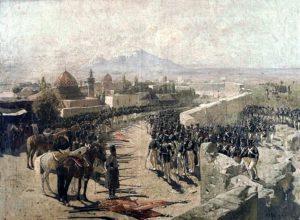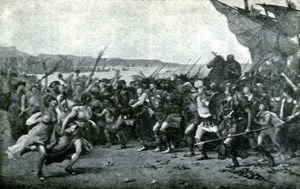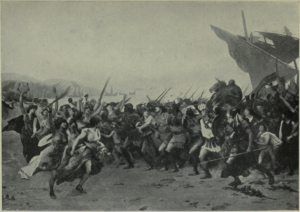At the end of the seventh century, king Gyges of Lydia conquered colophon. Responding to the aggression of Lydia, twelve ionic cities formed a league, whose center was the opinion, a shrine of Poseidon on the promontory of my kale. The weak league was unable to stop the conquest of the cities, by the next king of Lydia, king crosses.
Here are Some Major Persian Wars:
The Ionian Revolt
In 500, Aristagoras persuaded the Persians to attempt to take the island city-state of Naxos. Athens had been a principal ally in the Ionian revolt and the Athenians quite naturally feared that Darius would be coming after them next.

Darius finally invaded in person in 490, sailing from the Phoenician coast with a huge armada and landing on the island of Euboea.
The Battle of the Marathon (490 BC) – War in Persia
In the spring of 490 bc, Darius assembled in Cilicia a big army, he also prepared a fleet of 600 galleys. The commanders, dates, and arteries, had been instructed to reduce to subjection the cities which had refused to give earth and water, particularly Athens and Eretria.

During the battle of marathon, a strange event happened to the Athenian hoplite Venizelos, son of Kouphagoras, who lost his vision and never regained it, though he had not received any wound or beating. After the conquest of Mycale the Athenian fleet conquered the Thracian Chersonese, and this and other expeditions, for example against Byzantium, were lead by the Spartan Pausanias.
The Thermopylae war in Persia
Since Darius’ plan to conquer Greece by sea hadn’t worked, Xerxes decided to try coming by land. When the people of Thrace and Macedonia heard that the Persian army had crossed the Hellespont and was coming towards them, they quickly surrendered to the Persians or made alliances with them.
The Battle of Salamis in Persia
In the eighteenth century the distinguished Hellenist Pierre-Henri Larcher understood that the Keos and Kynosura mentioned by Herodotus were the places generally known by these names; but in 1829 William Martin Leake asserted, without any textual evidence, that the name of Kynosura applied to a promontory of the island of Salamis and that Keos was some island thereabout.

The Persian force that attacked at salamis suffered disaster, but in spite of it the greeks were expecting a new attack by the Persian fleet (Herodotos viii 97) and were surprised when this fleet was withdrawn (viii 107, 108). After they learned that the Persian fleet had withdrawn, the Greeks considered pursuing it and attacking the bridges at the Dardanelles.
In 1956 Hammond, although he tried to refute by some obscure argument the contention that on the eve of the battle of salamis part of the Persian fleet was stationed at Keos and Kynosura, granted that it is no longer possible to ascribe a smaller figure to the Persian fleet.